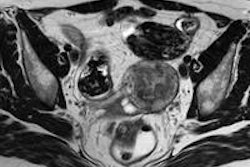
HAMBURG - X-ray is losing ground to technologies often seen as sexier, and young radiologists tend to disregard it too quickly. However, the technology has many benefits and there is an obvious need for a turnaround, Dr. Stefan Diederich said at the opening press conference of the 95th congress of the German Society of Radiology (DRK).
 X-ray is an extremely valuable and cost-effective technology, said German Congress President Dr. Stefan Diederich.
X-ray is an extremely valuable and cost-effective technology, said German Congress President Dr. Stefan Diederich.A central aim of this week's joint congress of the German and Austrian Radiological Societies is to help radiologists rediscover this valuable method, and organizers have turned the conventional x-ray image into a conspicuous item on the meeting agenda.
"Reading those images correctly opens up an enormous diagnostic treasure," underlined Diederich, joint congress president and head of the Institute of Diagnostic and Interventional Radiology at Marienhospital Düsseldorf, as well as a professor at the University of Münster. "Projection radiography is the core technology of our discipline. Its routine application leads to a reduction of dose, economically viable workflows, and, in general, the practice of good medicine."
Unwavering support came instantly from the other joint congress president, Dr. Johannes Lammer from Vienna who was head of the department of cardiovascular and interventional radiology and vice director of the Vienna University Hospital for Radiology and Nuclear Medicine until spring of this year. "We radiologists consider it a core task, and core competence, of our discipline to provide the best x-ray images and the best diagnostic evaluation ... this is not the terrain of orthopedists, surgeons, or internists."
 Austrian Congress President Dr. Johannes Lammer.
Austrian Congress President Dr. Johannes Lammer.X-ray uses lower dosage in comparison with CT, and exposure for images taken of the lung is particularly low, Diederich noted. Innovations introduced recently, such as flat-panel detectors, have led to further improvements of the exposure characteristics, and therefore x-ray should continue to be the method choice for these purposes, he added. Furthermore, conventional x-ray is fast, and the speedy processing of x-rays makes it convenient for both patients and staff.
"It only takes one minute or two to acquire an image, and just milliseconds to produce it," he said. "That compares well with many minutes taken for CT acquisitions and half, or three-quarters of, an hour for MRI."
As a result, patient throughput is high, allowing for a large number of patient examinations to be carried out each day. Also, x-ray equipment requires significantly smaller investments in comparison with CT and MRI, and overall the method is highly cost-effective, according to Diederich.
But what are the drawbacks of x-ray?
"Young radiologists, in particular, find it easier to read images from technologies based on slices," Lammer explained. "In x-ray images, structures are superimposed; therefore, radiologists need to know a lot more about the anatomy to differentiate superimposition from pathologies, and to produce a correct interpretation."
Because of this complexity, young radiologists may opt to avoid the potential diagnostic uncertainty of x-ray.
"We decided to put x-ray back onto the agenda, and to close the gaps concerning reading competence for all regions of the body," Diederich said. "Much of the expertise required comes from colleagues who entered the discipline in the times before the introduction of CT. This is the right time to have them re-enter the stage -- these radiologists are now approaching retirement."
According to Lammer, "Our message goes out to the young generation of radiologists -- for your own benefit, and for the benefit of your patients, embrace, x-ray."



















